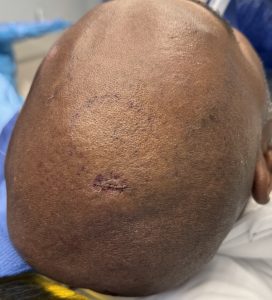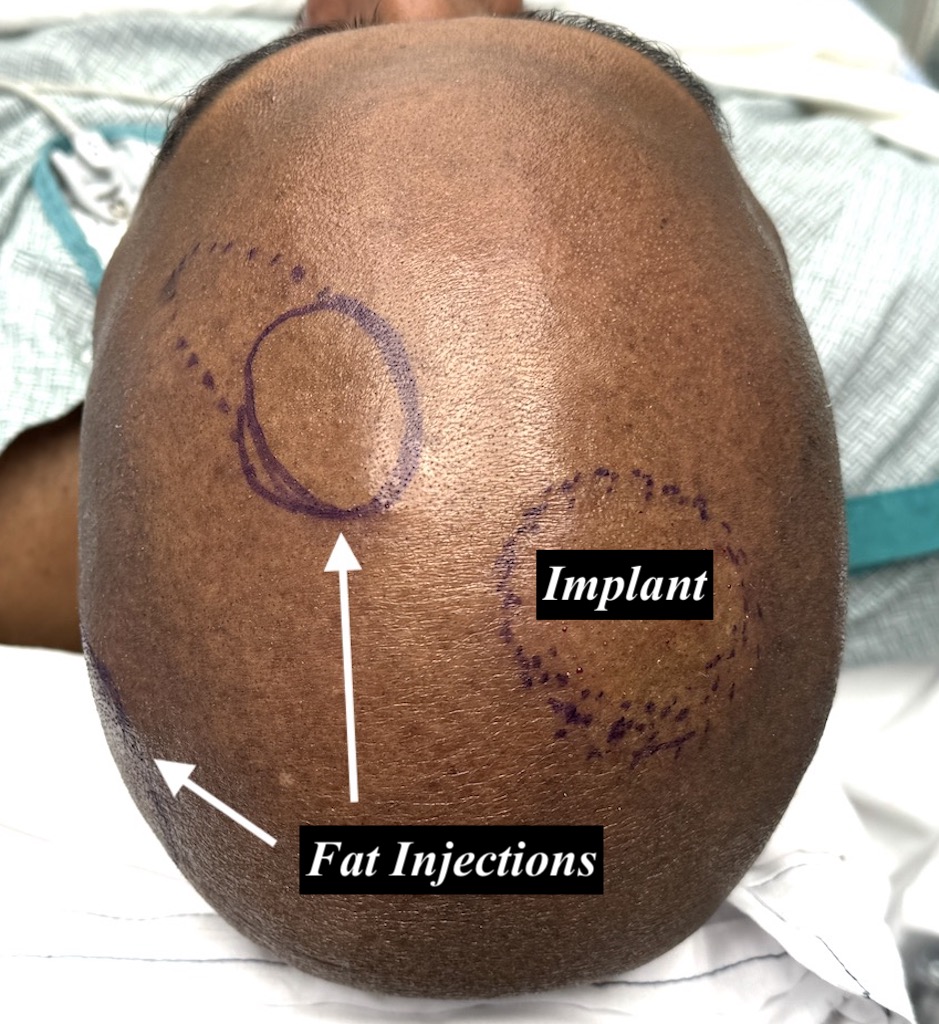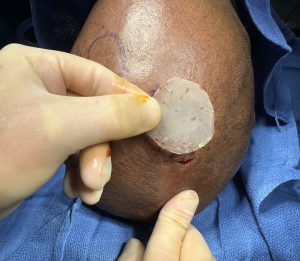Most aesthetic skull augmentations are of a significant enough magnitude that the only effective treatment is a custom skull implant. Whether it is the volume or the shape of the needed skull augmentation a reshaped implant made from the patient’s 3D CT scan is the way to go for most patients. But some patients do have very small skull augmentation needs for which numerous non-custom approaches can be successfull used.
Injectable fillers are the most obvious materials that fit into the small skull augmentation treatment category. Numerous synthetic injectable materials and fat can be injected and are perfectly appropriate for small indentations and depressions particularly if they are more scalp-based than skull-bone based. They are also a good technique for fixing edges or small insufficiencies from previous custom skull implant placements. Their downside is their lack of sustainability either from known resorption characteristics (synthetic fillers) or unpredictable volume retention. (fat)


Dr. Barry Eppley
World-Renowned Plastic Surgeon




